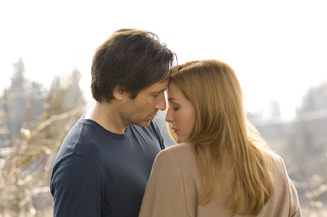|
|
Chapter TwoThe X-Files: I Want to BelieveBy Brett Ballard-BeachSeptember 15, 2011
To simply compare numbers, Fight the Future was released at the height of the show’s popularity and pulled in $84 million domestic and $190 million total worldwide. People were paying to see a two-part episode on the big screen. Ten years following that, six years after the show went off the air, and about five years later than intended, I Want to Believe didn’t make in its domestic run ($20 million) what Fight the Future made in its first two days. It finished 75% back of the first film here, and over 50% off abroad. The saving grace is that the sequel was significantly less expensive than the first film. Jumping back a moment to why the mythology and connecting plot strands would give me fits, can also help explain the big “lack” that I think is the emotional doughnut hole of the second film. What The X-Files seemed especially good at (and I would attribute this to creator Chris Carter) was creating intriguing, long-running mysteries and then providing answers or closure long after it ceased to matter for any one particular puzzle - the disappearance of Mulder’s sister let’s say - and long after the show had piled on numerous other threads that would be followed far longer than they should have been. To make another comparison, the finale of Twin Peaks may have been maddeningly and intentionally populated with cliffhangers, but it was true to David Lynch’s spirit. As The X-Files lurched into its final seasons, the overarching conspiracies seemed to matter less and less, yet they still commanded the lion’s share of story time. Carter’s vision for the show seemed misplaced.
|

|
|
|

|
Friday, May 3, 2024
© 2024 Box Office Prophets, a division of One Of Us, Inc.


